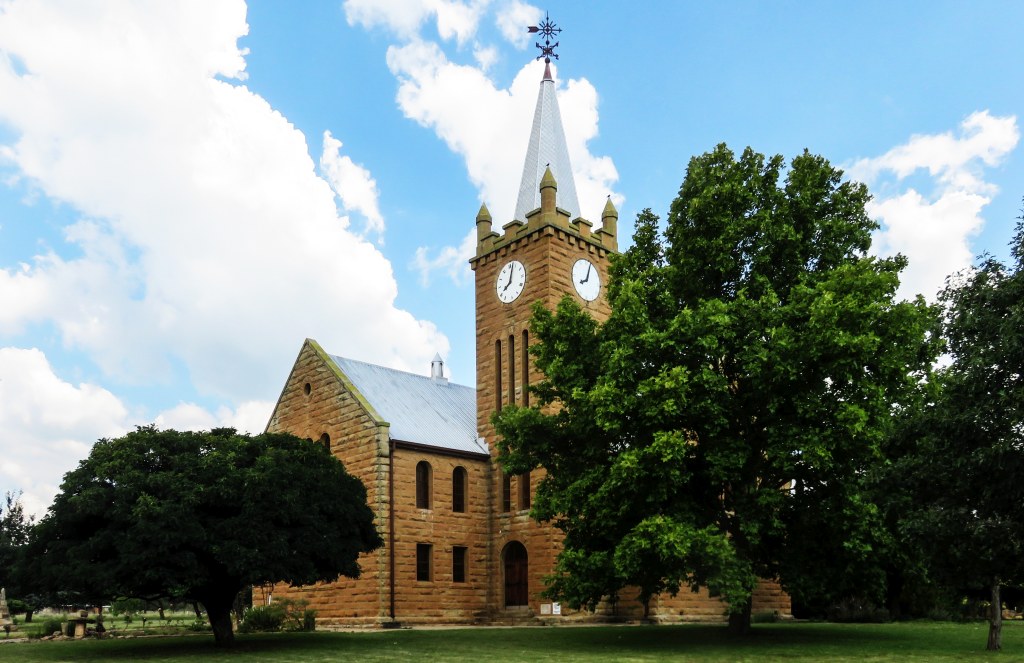
Rosendal
 A little village that was established in 1911 to fill the gap between Ficksburg and Senegal. Its distances to each of those towns was about 5 hours hours. The name it got from the numerous rose bushes growing in the area. The plant was originally brought from Europe by some missionaries, with the purpose of making rose-hip powder, which is rich in vitamin C.
The geo-location: 28.5059°S; 27.9337°E and 1694m altitude.
A little village that was established in 1911 to fill the gap between Ficksburg and Senegal. Its distances to each of those towns was about 5 hours hours. The name it got from the numerous rose bushes growing in the area. The plant was originally brought from Europe by some missionaries, with the purpose of making rose-hip powder, which is rich in vitamin C.
The geo-location: 28.5059°S; 27.9337°E and 1694m altitude.
In Ref 2 it is stated that 10 years after the town was established there were 300 white people living there. This was still far less than what the town was laid out for. And it didn't change much after that, in ref 1 the white population was 188 and the latest information from Wikipedia less than 100. But that, of course, doesn't count the people living in the black township. A number of about 4000 is given by Wikipedia.
Obviously a town in decline, saving it from further decline is that it has become a touristy place. People come here for the rural atmosphere the town offers with it the art galleries and a number of cafe’s/restaurants. Just looking at property sales I see lots of vacant stands for sale going for R90k to R240k, depending on size, the few houses on the market sell for R500k to R600k with one exeption of R1.7M (that was March 2022).
NG church
 The congregation of the NG church was established soon after the town was proclaimed. Officially it was established on the 15-October-1913 by ceding from Ficksburg, Senekal and Bethlehem. Church services were initially held in provisional structures, under tarpaulins and in the smithy's workshop.
The congregation of the NG church was established soon after the town was proclaimed. Officially it was established on the 15-October-1913 by ceding from Ficksburg, Senekal and Bethlehem. Church services were initially held in provisional structures, under tarpaulins and in the smithy's workshop.
In the very first church council meeting it was decided to proceed with building a church. The foundation stone was laid on the 8-July-1914, the architect was W.Donaldson & son. War time delayed the construction somewhat, on the 28-April-1916 the church was inaugurated.
Cemetery
 The cemetery was established off to the southern side of town. I have had a walk through but not found any grave stone that would attract my attention.
The cemetery was established off to the southern side of town. I have had a walk through but not found any grave stone that would attract my attention.
References
Ref 1.: Standard Encyclopedia of Southern Africa, Nasou Limited, 1974
Ref 2.: C.C.Eloff, Oos-Vrystaatse Grensgordel, published by the: Raad vir Geesteswetenskaplike Navorsing, 1980